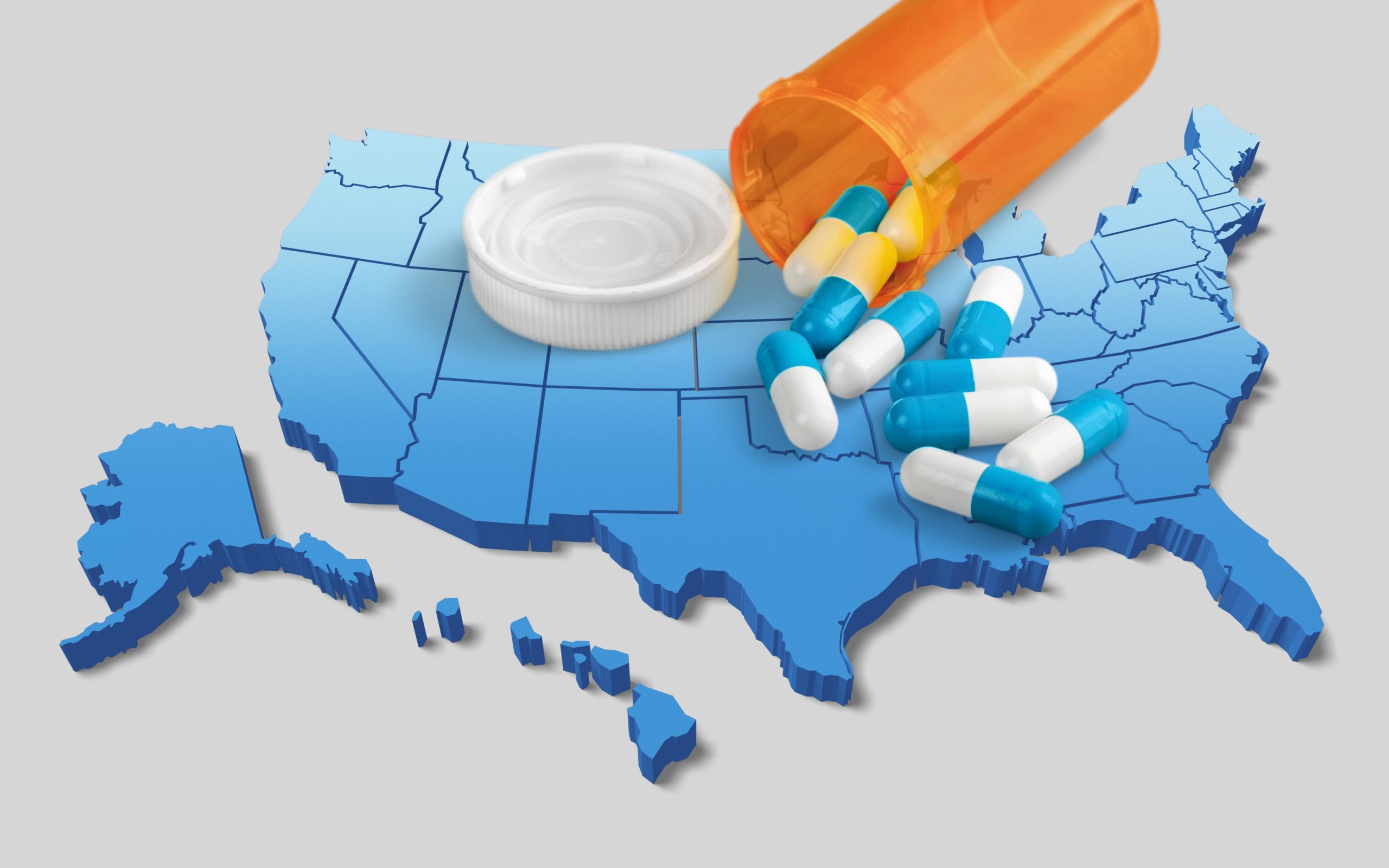Overdose Deaths Spike During COVID-19 Pandemic

Article by Julia Garbee ’22.
Addiction is a disease that thrives in isolation. The long-term isolation and economic devastation triggered by the COVID-19 pandemic largely contributed to exacerbated drug use. Overdose fatalities, which were already on the rise pre-pandemic, became more frequent due to these pandemic stressors and treatment shortages.
More than 54,000 Americans died of drug overdose deaths between March 2020 and September 2020, according to the Centers for Disease Control and Prevention (CDC). While overdose deaths were already increasing prior to the pandemic, our data analysis suggest that the COVID-19 pandemic accelerated drug overdose deaths.
We find that when a state’s monthly COVID-19 cases increase by 1%, the state’s monthly overdose deaths per 100,000 people rise by an average of .071. Alternatively, when COVID-19 deaths increase by 1%, overdose deaths per 100,000 people rise by an average of .109. During the 6-month period of lockdown instigated by COVID-19, there were 2.458 overdose deaths per 100,000 people. In the prior 6-month period, there were 1.873 overdose deaths per 100,000 people.
We used provisional drug overdose death counts from the Vital Statistics Rapid Release, adjusting 12 month-ending data into monthly data by assuming a uniform distribution of death counts in 2014 and then backing out monthly numbers for the following years. Data from the CDC was used for COVID-19 case counts and death counts by state and month. We used precipitation and temperature data from the National Centers for Environmental Information (NOAA) to hold constant weather-related variables in our regression. Yearly population estimates from the U.S. Census Bureau were interpolated across months to create monthly overdose estimates per 100,000 people in a state’s population. We used panel data analysis to run a regression of overdose deaths per 100,000 people in a population on the log of COVID-19 cases (as well as deaths), holding temperature, precipitation, log of population, and date constant.
Fighting the opioid epidemic had been central to our nation’s public health agenda – until the novel COVID-19 virus. Health spending was quickly funneled to COVID-19 resources. Hospitals at capacity turned away patients in need of all forms of care.
Stay-at-home orders began in March of 2020 and by the end of April, almost every state instructed their residents to not leave their homes. As the months got warmer, unemployment rates sky-rocketed nationwide – and so did overdose rates. By the end of April, unemployment rates in West Virginia increased nearly threefold from 5.3% to 15.6%. At the same time, overdoses per 100,000 people increased from 4.36 to 9.63.
Beyond unemployment, the pandemic created social and financial stressors for all individuals. People experienced work and school closure, inadequate medical resources and necessities, cancelled social events, and stress from potentially contracting the virus itself. These stressors engendered unhealthy behavioral responses. Those with depression or histories of addiction often turned to substance abuse. In a sample of over 5,850 participants, 29% reported increased alcohol use during the pandemic. Those with depressive symptoms had a 64% greater likelihood of increased alcohol use. Similarly, non-prescribed fentanyl increased 35% according to a Quest Diagnostics study of over 880,000 patients. Heroin use also rose by 44%, according to the same study.
The opioid epidemic was raging long before its exacerbation by COVID. Indeed, overdose rates have been steadily increasing in advance of the pandemic. In January of 2015, California experienced .98 overdose deaths per capita. In January of 2020, pre-pandemic, that number rose to 1.4 overdose deaths per 100,000 people in a state’s population.
Increased use was not the only cause of this spike in drug-related fatalities. Treatment for patients with drug abuse issues was scarce during the pandemic. Hospitals quickly reached capacity with COVID-19 patients, turning away patients seeking care for non-life-threatening conditions like addiction.
Addiction treatment centers closed due to social distancing guidelines and insufficient funding. Health spending became focused on COVID-19, reducing the budgets for treatment facilities. By the summer of 2020, the addiction treatment industry lost $4 billion in revenue and over 1,000 providers, representing hundreds of thousands of patients untreated. According to a NCBH survey from September 2020, 54% of behavioral health organizations closed and 65% turned away patients. Despite the increase in demand for their services, many centers had to decrease hours for staff and furlough or lay off employees.
Patients typically tested weekly to assess compliance with prescribed drugs or other drug use were also neglected during the pandemic. Clinical drug testing volume fell by around 70% from the pre-pandemic to the end of March 2020.
“The increase in overdose deaths is concerning.” said Deb Houry, M.D., M.P.H., director of CDC’s National Center for Injury Prevention and Control. She stated, “Our priority is to do everything we can to equip people on the ground to save lives in their communities.”
President Biden hopes to reduce the number of drug-related fatalities during his presidency. His American Rescue Plan Act includes a $1.5 billion allocation for prevention and treatment of substance use disorders. He also plans to add $30 million to fund local treatment services like syringe exchange programs. The Biden administration recently announced that it would allow federal dollars to be used to buy rapid fentanyl test strips.
COVID-19 induced a ripple of tragic side-effects felt nationwide. Medical shortages, coupled with financial stressors and isolation, contributed to the rising number of drug overdose fatalities in 2020. The urgency for a national agenda that addresses drug addiction has never been stronger. While vaccination rates are on the rise and people are returning to their normal lives, many Americans still struggle with the lasting mental health impact from COVID-19.


